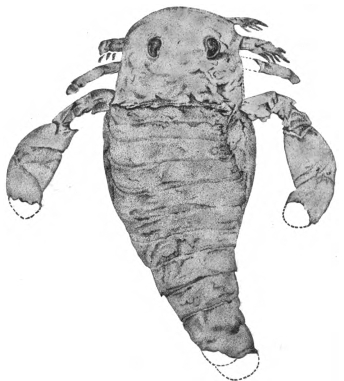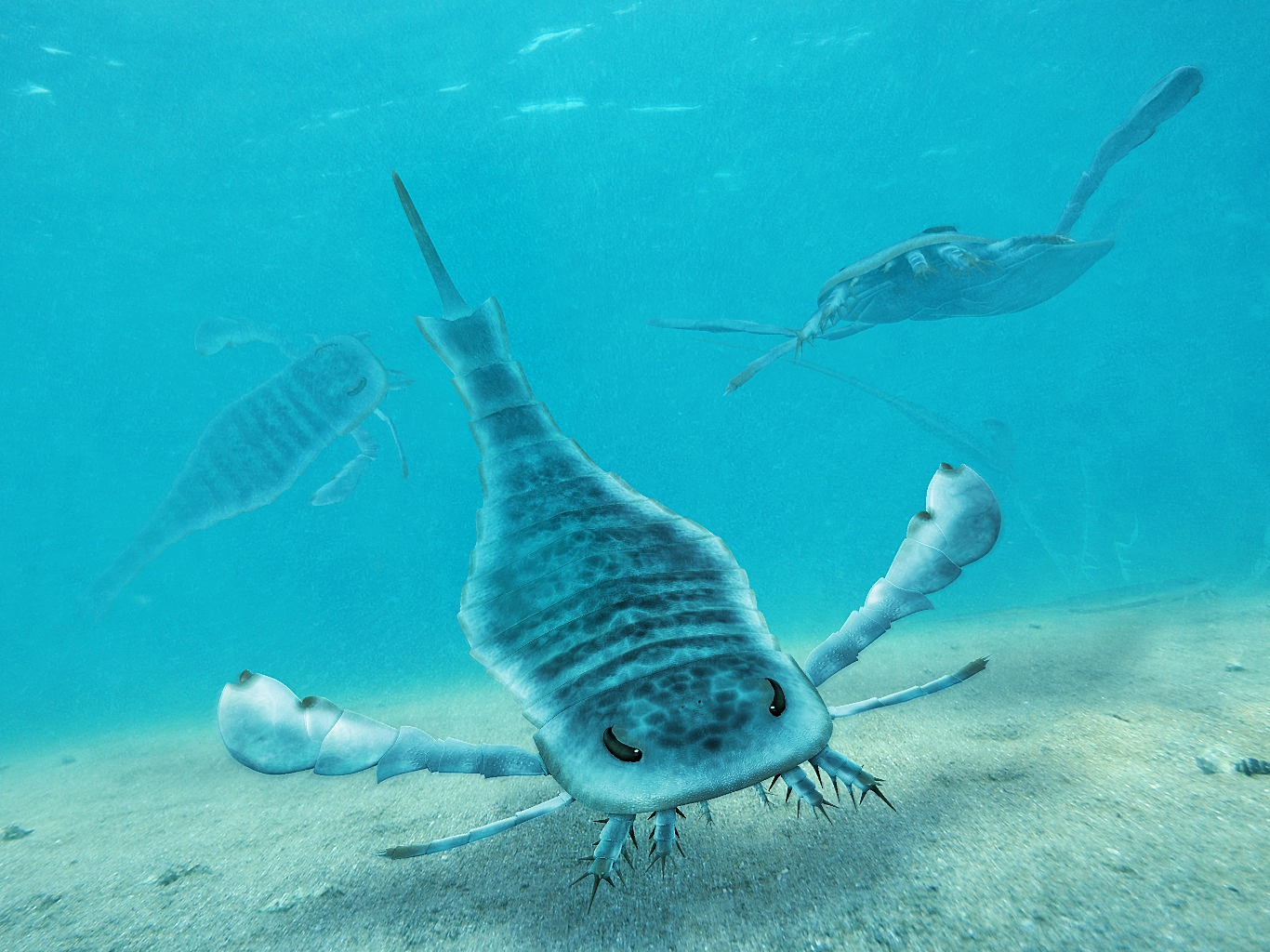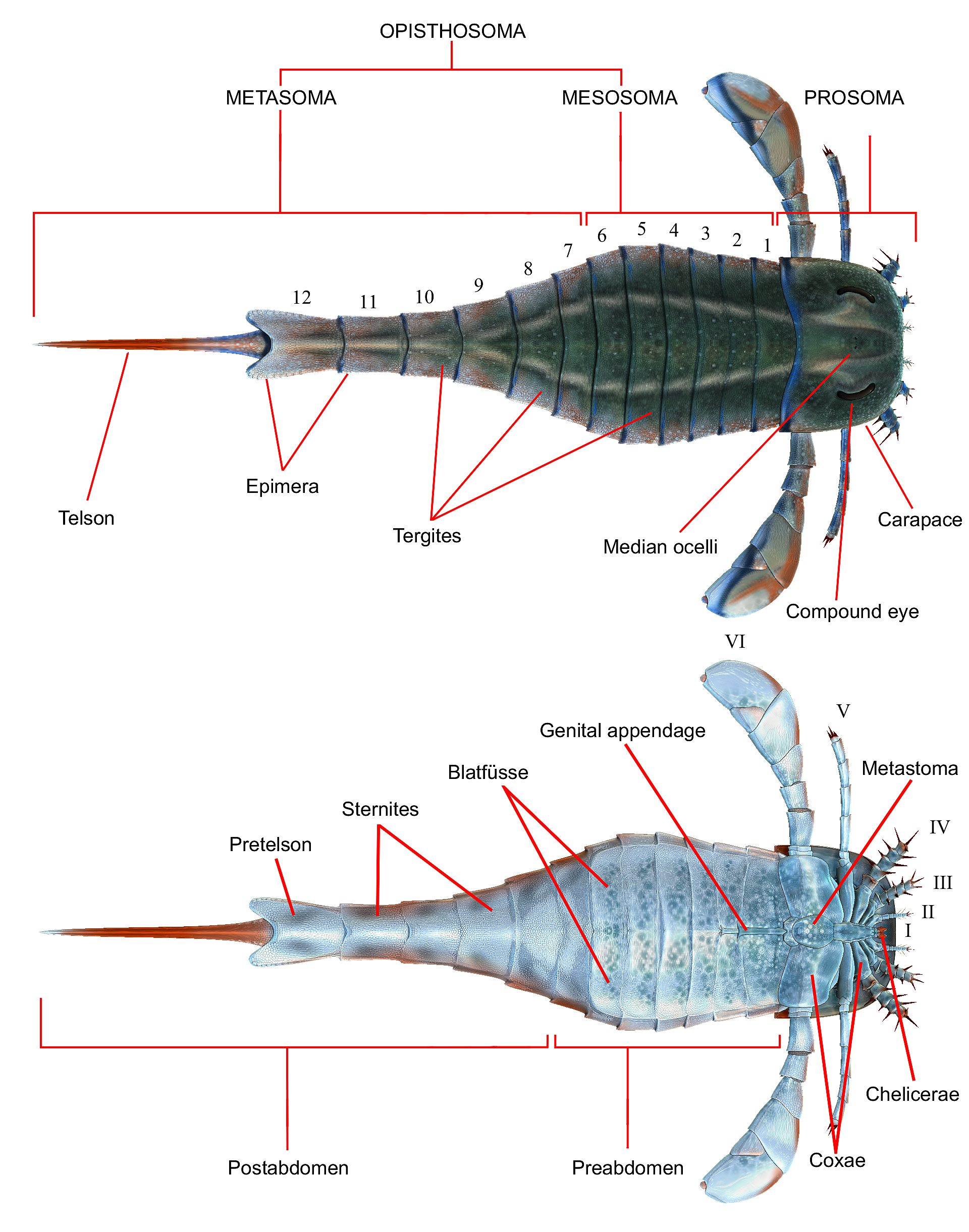|
Soligorskopterus
''Soligorskopterus'' is a genus of eurypterid, a group of extinct aquatic arthropods. Fossils of ''Soligorskopterus'' have been discovered in deposits from the Late Devonian. The genus contains two species: ''S. tchepeliensis'', the type species, from the Middle Famennian stage of Belarus, and ''S. shpinevi'', from the Lower Frasnian stage of Russia. Its name derives from Soligorsk, the closest city from the fossil site of the type species, and the Greek Greek may refer to: Anything of, from, or related to Greece, a country in Southern Europe: *Greeks, an ethnic group *Greek language, a branch of the Indo-European language family **Proto-Greek language, the assumed last common ancestor of all kno ... word πτερόν (''pteron''), which means wing. See also * List of eurypterid genera * Timeline of eurypterid research References Devonian eurypterids Eurypterids of Europe Frasnian life Famennian life Fossils of Russia Fossil taxa described in 2018 Stylonuroidea ... [...More Info...] [...Related Items...] OR: [Wikipedia] [Google] [Baidu] |
Timeline Of Eurypterid Research
This timeline of eurypterid research is a chronologically ordered list of important fossil discoveries, controversies of interpretation, and Biological taxonomy, taxonomic revisions of eurypterids, a group of extinct aquatic arthropods closely related to modern arachnids and horseshoe crabs that lived during the Paleozoic Era (geology), Era. The scientific study of eurypterids began in the early 19th century when James Ellsworth De Kay, James E. DeKay recognized a fossil that had previously been described as that of a fish as arthropod in nature. Though DeKay erroneously believed the fossil to represent a crustacean and a missing link between trilobites and Branchiopoda, branchiopods, the fossil became the type species of first ever eurypterid to be scientifically described, ''Eurypterus remipes'', in 1825 in paleontology, 1825.Clarke, J. K., Ruedemann R. (1912) "wikisource:The Eurypterida of New York/Volume 1/Eurypteridae, The Eurypterida of New York" Over 250 species of eurypte ... [...More Info...] [...Related Items...] OR: [Wikipedia] [Google] [Baidu] |
List Of Eurypterid Genera
This list of eurypterid genera is a comprehensive listing of all genera that have ever been included in the order Eurypterida, excluding purely vernacular terms. The list includes all commonly accepted genera, but also genera that are now considered invalid, doubtful (''nomen dubium''), or were not formally published (''nomen nudum''), as well as junior synonyms of more established names and genera that are no longer considered eurypterids. The list currently includes 115 names out of which 74 are considered valid eurypterid genera. There are approximately 250 species of eurypterids recognized as valid. Naming conventions and terminology There is no "official" or "canonical" list of eurypterid genera. The closest thing is found contained in the regularly updated ''Summary list'' ''of fossil spiders and their relatives'' in the World Spider Catalog. The vast majority of the content of the list below, including the valid genera, preoccupied names, junior synonyms, taxonomical clas ... [...More Info...] [...Related Items...] OR: [Wikipedia] [Google] [Baidu] |
Frasnian
The Frasnian is one of two faunal stages in the Late Devonian Period. It lasted from million years ago to million years ago. It was preceded by the Givetian Stage and followed by the Famennian Stage. Major reef-building was under way during the Frasnian Stage, particularly in western Canada and Australia. On land, the first forests were taking shape. In North America, the Antler orogeny peaked, which were contemporary with the Bretonic phase of the Variscan orogeny in Europe Europe is a continent located entirely in the Northern Hemisphere and mostly in the Eastern Hemisphere. It is bordered by the Arctic Ocean to the north, the Atlantic Ocean to the west, the Mediterranean Sea to the south, and Asia to the east .... The Frasnian coincides with the second half of the "charcoal gap" in the fossil record, a time when atmospheric oxygen levels were below 13 percent, the minimum necessary to sustain wildfires. North American subdivisions of the Frasnian include * We ... [...More Info...] [...Related Items...] OR: [Wikipedia] [Google] [Baidu] |
Soligorsk
Salihorsk or Soligorsk (, ; , ) is a town in Minsk Region, Belarus. It serves as the administrative center of Salihorsk District. As of 2025, it has a population of 96,993. History The city is one of the country's newest settlements; its construction began in 1958. In May 1963, Salihorsk gained the status of a city/town (''gorod''), and by January 1964, the town already had more than 18,000 inhabitants. In Dec 2002, Salihorsk hosted the Belarusian shooting championships. Geography Salihorsk lies in the south of Minsk Region near Slutsk, around from Minsk. Demographics Sport Salihorsk is the home city of Shakhtyor Soligorsk football club as well as HC Shakhtyor Soligorsk in the Belarusian Extraliga ice hockey league. Twin towns – sister cities * Kohtla-Järve Kohtla-Järve () is a city and Municipalities of Estonia, municipality in northeastern Estonia, founded in 1924 and incorporated as a town in 1946. The city is highly industrial, and is both a proce ... [...More Info...] [...Related Items...] OR: [Wikipedia] [Google] [Baidu] |
Fossils Of Russia
A fossil (from Classical Latin , ) is any preserved remains, impression, or trace of any once-living thing from a past geological age. Examples include bones, shells, exoskeletons, stone imprints of animals or microbes, objects preserved in amber, hair, petrified wood and DNA remnants. The totality of fossils is known as the ''fossil record''. Though the fossil record is incomplete, numerous studies have demonstrated that there is enough information available to give a good understanding of the pattern of diversification of life on Earth. In addition, the record can predict and fill gaps such as the discovery of ''Tiktaalik'' in the arctic of Canada. Paleontology includes the study of fossils: their age, method of formation, and evolutionary significance. Specimens are sometimes considered to be fossils if they are over 10,000 years old. The oldest fossils are around 3.48 billion years to 4.1 billion years old. Early edition, published online before print. The o ... [...More Info...] [...Related Items...] OR: [Wikipedia] [Google] [Baidu] |
Famennian Life
The Famennian is the later of two faunal stages in the Late Devonian epoch. The most recent estimate for its duration is that it lasted from around 371.1 to 359.3 million years ago. An earlier 2012 estimate, still used by the International Commission on Stratigraphy, is that it lasted from million years ago to million years ago. It was preceded by the Frasnian stage and followed by the Tournaisian stage. Major events In the seas, a novel major group of ammonoid cephalopods called Clymeniida, clymeniids appeared, underwent tremendous biodiversity, diversification and spread worldwide, then just as suddenly went extinct. The beginning of the Famennian is marked by the final stages of a major extinction event, the Late Devonian extinction, Kellwasser Event, which is the largest component of the Late Devonian mass extinction. The end of the Famennian experiences a smaller but still quite severe extinction event, the Hangenberg Event. A brief episode of glaciation, possibly linked ... [...More Info...] [...Related Items...] OR: [Wikipedia] [Google] [Baidu] |
Frasnian Life
The Frasnian is one of two faunal stages in the Late Devonian Period. It lasted from million years ago to million years ago. It was preceded by the Givetian Stage and followed by the Famennian Stage. Major reef-building was under way during the Frasnian Stage, particularly in western Canada and Australia. On land, the first forests were taking shape. In North America, the Antler orogeny peaked, which were contemporary with the Bretonic phase of the Variscan orogeny in Europe. The Frasnian coincides with the second half of the "charcoal gap" in the fossil record, a time when atmospheric oxygen levels were below 13 percent, the minimum necessary to sustain wildfires. North American subdivisions of the Frasnian include * West Falls Group * Sonyea Group * Genesee Group Name and definition The Frasnian Stage was proposed in 1879 by French geologist Jules Gosselet and was accepted for the lower stage of the Upper Devonian by the Subcommission on Devonian Stratigraphy in 1981. ... [...More Info...] [...Related Items...] OR: [Wikipedia] [Google] [Baidu] |
Eurypterids Of Europe
Eurypterids, often informally called sea scorpions, are a group of extinct marine arthropods that form the order Eurypterida. The earliest known eurypterids date to the Darriwilian stage of the Ordovician period, 467.3 million years ago. The group is likely to have appeared first either during the Early Ordovician or Late Cambrian period. With approximately 250 species, the Eurypterida is the most diverse Paleozoic chelicerate order. Following their appearance during the Ordovician, eurypterids became major components of marine faunas during the Silurian, from which the majority of eurypterid species have been described. The Silurian genus ''Eurypterus'' accounts for more than 90% of all known eurypterid specimens. Though the group continued to diversify during the subsequent Devonian period, the eurypterids were heavily affected by the Late Devonian extinction event. They declined in numbers and diversity until becoming extinct during the Permian–Triassic extinction event (or ... [...More Info...] [...Related Items...] OR: [Wikipedia] [Google] [Baidu] |
Devonian Eurypterids
The Devonian ( ) is a geologic period and system of the Paleozoic era during the Phanerozoic eon, spanning 60.3 million years from the end of the preceding Silurian period at million years ago ( Ma), to the beginning of the succeeding Carboniferous period at Ma. It is the fourth period of both the Paleozoic and the Phanerozoic. It is named after Devon, South West England, where rocks from this period were first studied. The first significant evolutionary radiation of life on land occurred during the Devonian, as free- sporing land plants (pteridophytes) began to spread across dry land, forming extensive coal forests which covered the continents. By the middle of the Devonian, several groups of vascular plants had evolved leaves and true roots, and by the end of the period the first seed-bearing plants ( pteridospermatophytes) appeared. This rapid evolution and colonization process, which had begun during the Silurian, is known as the Silurian-Devonian Terrestrial Revolu ... [...More Info...] [...Related Items...] OR: [Wikipedia] [Google] [Baidu] |
PalZ
''PalZ'' (formerly ''Paläontologische Zeitschrift'') is an international, peer-reviewed periodical focused on palaeontology and published by the palaeontological society of Germany ( Paläontologische Gesellschaft). The first issue was released in 1914. Until 1998 the journal was issued semiannually. From there on 4 issues were published each year. From 2009 on the periodical is printed and distributed by the Axel Springer AG. PalZ publishes articles in the field of vertebrate palaeontology, invertebrate palaeontology, micropalaeontology and ichnology A trace fossil, also called an ichnofossil (; ), is a fossil record of biological activity by lifeforms, but not the preserved remains of the organism itself. Trace fossils contrast with body fossils, which are the fossilized remains of part ... to approximately the same extent. While the publication language was predominantly German in most of the 20th century, it successively shifted to English since the 1980s. References ... [...More Info...] [...Related Items...] OR: [Wikipedia] [Google] [Baidu] |
Greek Language
Greek (, ; , ) is an Indo-European languages, Indo-European language, constituting an independent Hellenic languages, Hellenic branch within the Indo-European language family. It is native to Greece, Cyprus, Italy (in Calabria and Salento), southern Albania, and other regions of the Balkans, Caucasus, the Black Sea coast, Asia Minor, and the Eastern Mediterranean. It has the list of languages by first written accounts, longest documented history of any Indo-European language, spanning at least 3,400 years of written records. Its writing system is the Greek alphabet, which has been used for approximately 2,800 years; previously, Greek was recorded in writing systems such as Linear B and the Cypriot syllabary. The Greek language holds a very important place in the history of the Western world. Beginning with the epics of Homer, ancient Greek literature includes many works of lasting importance in the European canon. Greek is also the language in which many of the foundational texts ... [...More Info...] [...Related Items...] OR: [Wikipedia] [Google] [Baidu] |





